Introduction
In the last decade, vinyl records have made an unexpected comeback. Once thought to be obsolete in the age of digital downloads and streaming services, these physical music formats are now seeing a resurgence in popularity. But why is this happening? Who is buying vinyl records today, and what is driving this demand?
The History of Vinyl Records
Vinyl records, a classic form of recorded music, have a rich and storied history that spans over a century. Let's take a look at how they rose, fell, and then resurged in popularity.
The Birth of Vinyl Records
Vinyl records made their debut in the early 20th century, but the format we know today — the long play (LP) 33⅓ rpm microgroove vinyl record — didn't become standard until 1948, when Columbia Records introduced it. These records were an improvement over the shellac records of the time, which were brittle and had a limited capacity for song length.
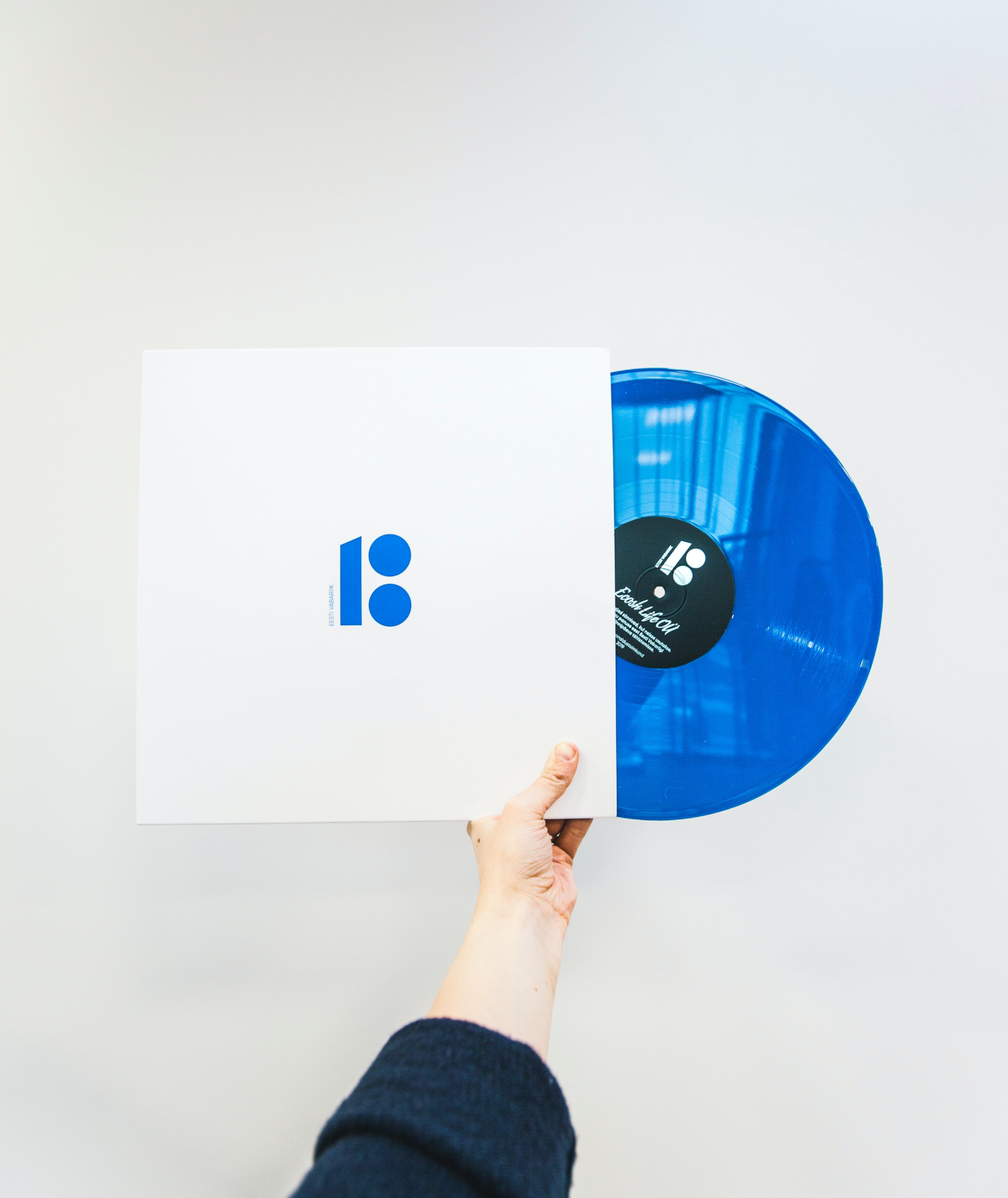
The LP quickly gained popularity because it allowed listeners to enjoy multiple songs on a single disc, typically holding around 22 minutes of music per side. This was a significant upgrade from the previous formats, which typically held only one song per side.
The Heyday of Vinyl
Vinyl records served as the dominant medium for enjoying recorded music from the 1950s through the late 70s. Artists such as Elvis Presley and Led Zeppelin released their music on vinyl, and owning a record collection became a common pastime.
During this era, record stores were a cultural hub, and browsing through rows of albums in search of a particular record was a cherished ritual for many music lovers. The large album covers also provided a canvas for artists to create iconic cover art, adding another dimension to the music-listening experience.
The Decline of Vinyl
The advent of new technologies in the 1980s led to a decline in vinyl's popularity. Cassette tapes offered portability, and CDs, introduced in the early 80s, offered greater sound quality and durability.
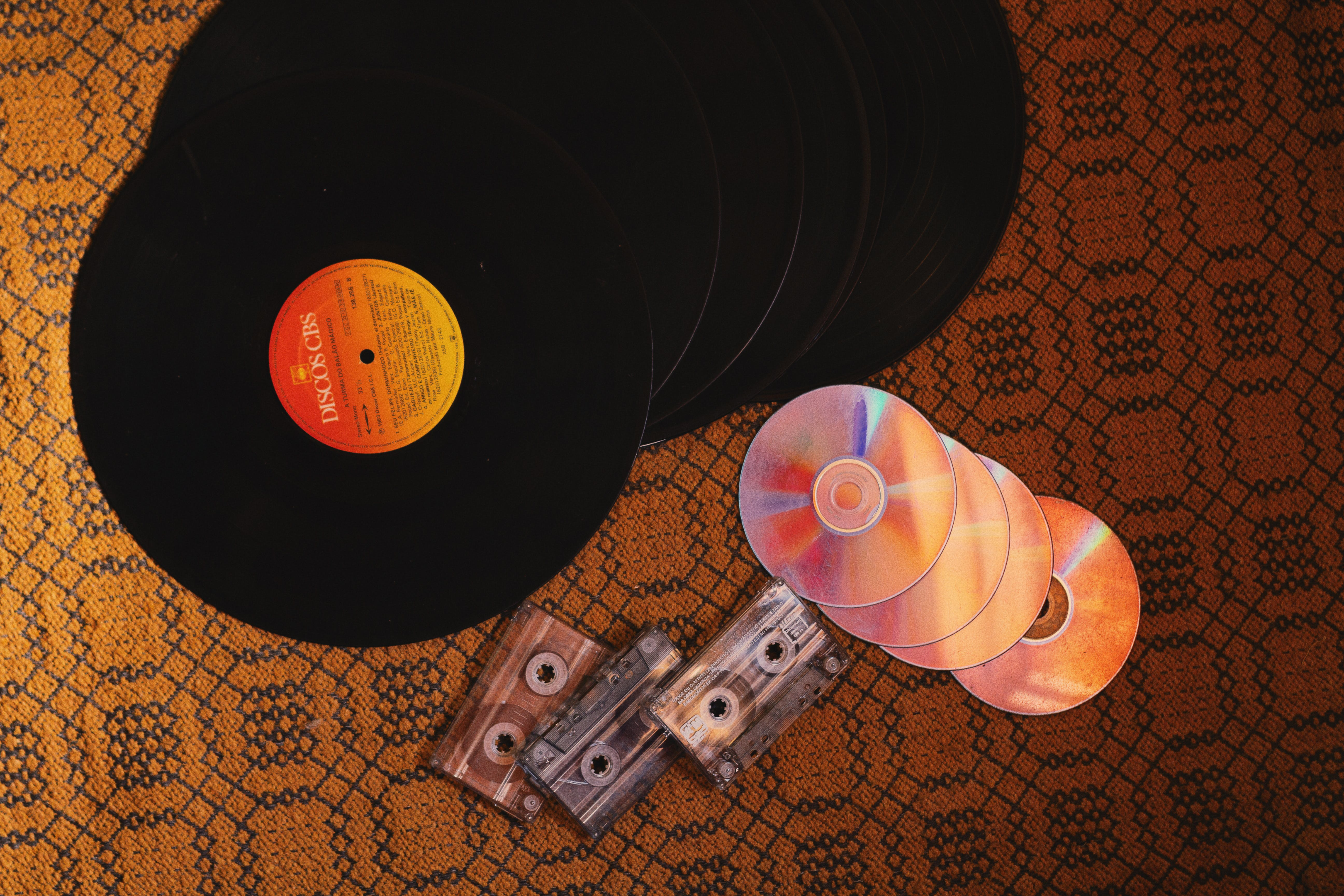
By the 90s, CDs had largely replaced vinyl records, and the dawn of digital music in the 2000s further pushed vinyl into obscurity.
Also check out: Looking to delve deeper into the world of music collecting? Discover the allure and value of limited-edition custom music CDs in this comprehensive guide.
The Resurgence of Vinyl
Despite these challenges, vinyl records made a surprising comeback in the late 2000s. This resurgence was driven by several factors: nostalgia for the tactile experience of handling vinyl, the unique analog sound quality, and a growing interest in owning physical music in an increasingly digital age.
The revival of vinyl records began around 2007. According to data from the Recording Industry Association of America (RIAA), vinyl record sales have grown consistently since then. In 2020, for the first time since the 1980s, revenue from vinyl records outpaced that of CDs. This growth has been driven by a combination of nostalgia, a desire for physical music formats, and the unique sonic qualities of vinyl.
Today, vinyl records are cherished by a diverse group of listeners. Younger generations are discovering the appeal of vinyl, while older generations are reconnecting with this format from their past. Artists from various genres release their music on vinyl, and record stores — both physical and online — are thriving.
The journey of vinyl records is a testament to the enduring appeal of this format. Despite the convenience and quality of digital music, vinyl offers a unique experience that many music lovers continue to cherish.
The Appeal of Vinyl
So, why the sudden surge in vinyl's popularity? One reason is the rise of streaming services. While these platforms offer convenience, they also create a sense of detachment from the music. Vinyl records, on the other hand, provide a more immersive, physical experience. Listeners can hold the record, study the album art, and engage with the music in a way that's not possible with digital downloads or streaming.
Moreover, vinyl is often seen as a collectible item. Limited edition pressings, colored vinyl, and records from popular artists can all fetch high prices on the resale market. Collecting used vinyl records has become a hobby for many, adding another layer to the vinyl resurgence.
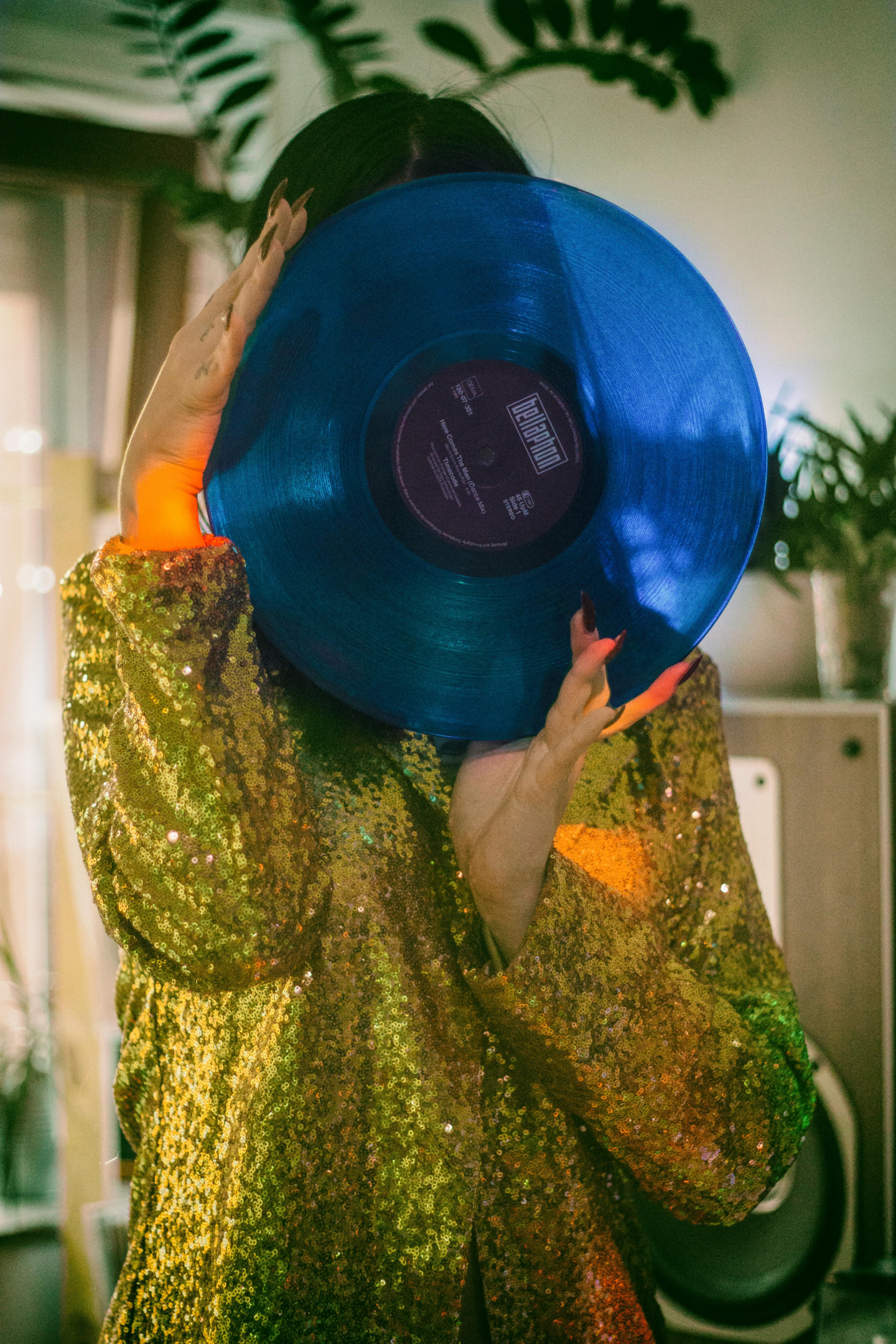
Finally, there's the sound quality. While digital music is technically superior in terms of clarity and lack of noise, many people find the sound of vinyl more pleasing to the ear. The analog nature of vinyl can create a warmer, more natural sound that many listeners prefer.
The resurgence of vinyl records can be attributed to a mix of nostalgia, the desire for a physical connection to music, the appeal of collecting, and the unique sound quality that vinyl offers. Despite living in a predominantly digital age, it seems there's still a place for this vintage format.
Who Buys Vinyl Records Today?
Today, vinyl record buyers come from all walks of life. They range from young music enthusiasts seeking a more authentic listening experience to older collectors who value the nostalgia that these old records can bring.
Vinyl record buyers are a diverse group. They range from young people in their teens and twenties who are discovering vinyl for the first time, to older generations who grew up with the format. For younger listeners, vinyl offers a tangible way to connect with music in the digital age. For older fans, vinyl provides a sense of nostalgia and a return to a more tactile listening experience.
There's also a segment of audiophiles who prefer vinyl because they believe it provides a warmer, richer sound compared to digital formats. They appreciate the unique "crackle" and "pop" that you can only get from a vinyl record.
Young Music Enthusiasts
Younger buyers, often in their teens and twenties, are discovering the appeal of vinyl records for the first time. In an era where digital music streaming is the norm, these individuals are seeking a more authentic, tactile connection to their favorite tunes.
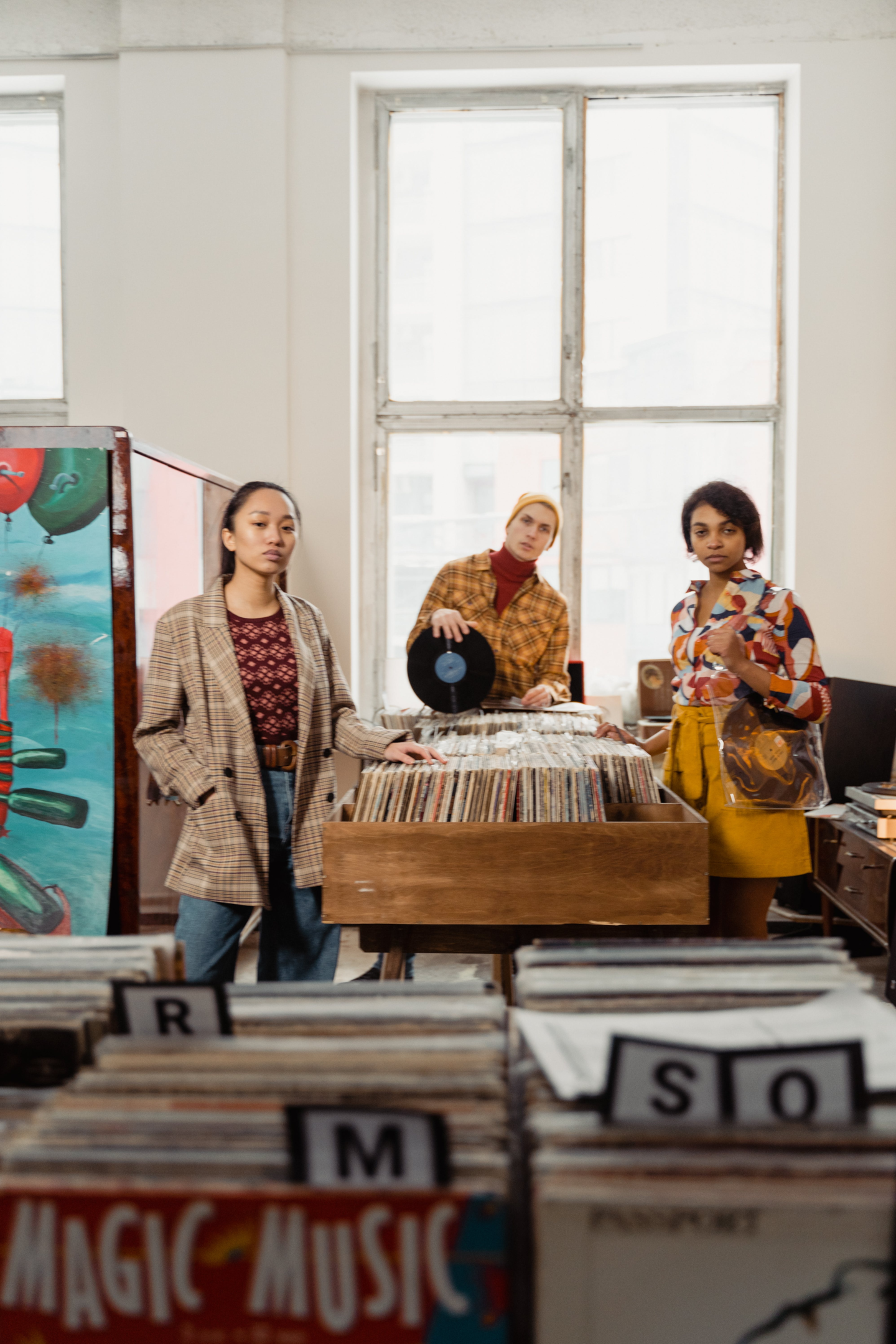
For these young enthusiasts, vinyl records offer an immersive listening experience that goes beyond the audio. The act of physically placing the needle on the record, the anticipation as the music begins to play, the large album covers that often feature intricate artwork - these elements create a multi-sensory engagement with the music that digital formats simply can't match.
Moreover, many young buyers see vinyl as a way to support their favorite artists. In a music business landscape where streaming royalties often fall short, buying vinyl provides a more direct way to fund the musicians they love.
Older Collectors
On the other end of the spectrum are older collectors, many of whom grew up during the heyday of vinyl. For these individuals, vinyl records are a trip down memory lane, a way to relive the music of their youth.
These collectors often have an emotional attachment to their records, each one a memento of a particular time in their lives. They may spend hours in used record stores or scour through online search resources, searching for that one elusive album to complete their collection.
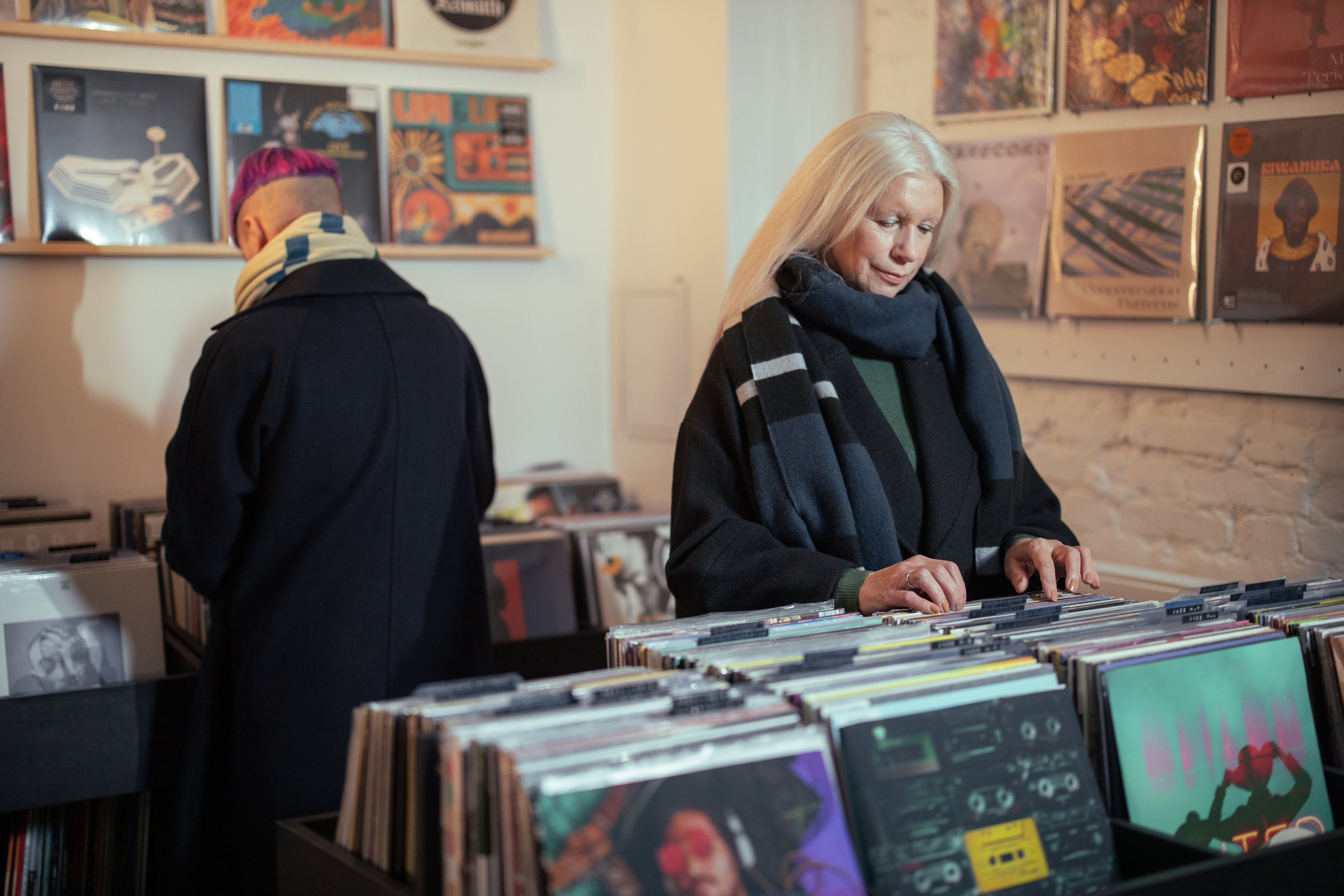
But nostalgia isn't the only thing driving these collectors. Many also appreciate the superior sound quality of old vinyl records. They argue that vinyl, being an analog format, captures the true essence of the original recording, offering a warmth and depth that digital formats can't replicate.
In addition, there's the thrill of the hunt. Finding a rare or valuable record at a garage sale, or discovering an underrated band in a dusty corner of a record store, adds an element of excitement to the collecting process.
Whether it's the young music lover seeking a deeper connection to their favorite songs, or the seasoned collector chasing the thrill of the hunt, vinyl record buyers are a diverse group. Yet they all share a common thread: a love for the unique experience that only vinyl can provide. It's this shared passion that is driving the resurgence of vinyl records, ensuring that this once-obsolete format continues to thrive in the digital age.
Understanding the Vinyl Record Market
The vinyl record market is a dynamic, complex system where prices for record collections can fluctuate dramatically based on various factors. From the rarity of a record to its physical condition and the fame of the artist, each element can significantly affect a record's value. Some rare records, particularly those from renowned artists like Elvis Presley or Led Zeppelin, can fetch astounding prices, reaching into the thousands of dollars.
Rarity: A Key Factor
Rarity plays a primary role in determining a vinyl record's value. Limited edition releases, misprints, or records that were initially poorly received and had a limited production run can all be considered rare. These records are highly sought after by collectors, driving up their price. For example, a rare version of The Beatles’ White Album, owned by Ringo Starr, sold for a whopping $790,000 at auction in 2015.
Condition: The Difference Between Worthless and Priceless
The physical condition of a vinyl record is another significant factor influencing its price. Records that have been well-preserved and show little to no signs of wear are more valuable than those with scratches or other damage.
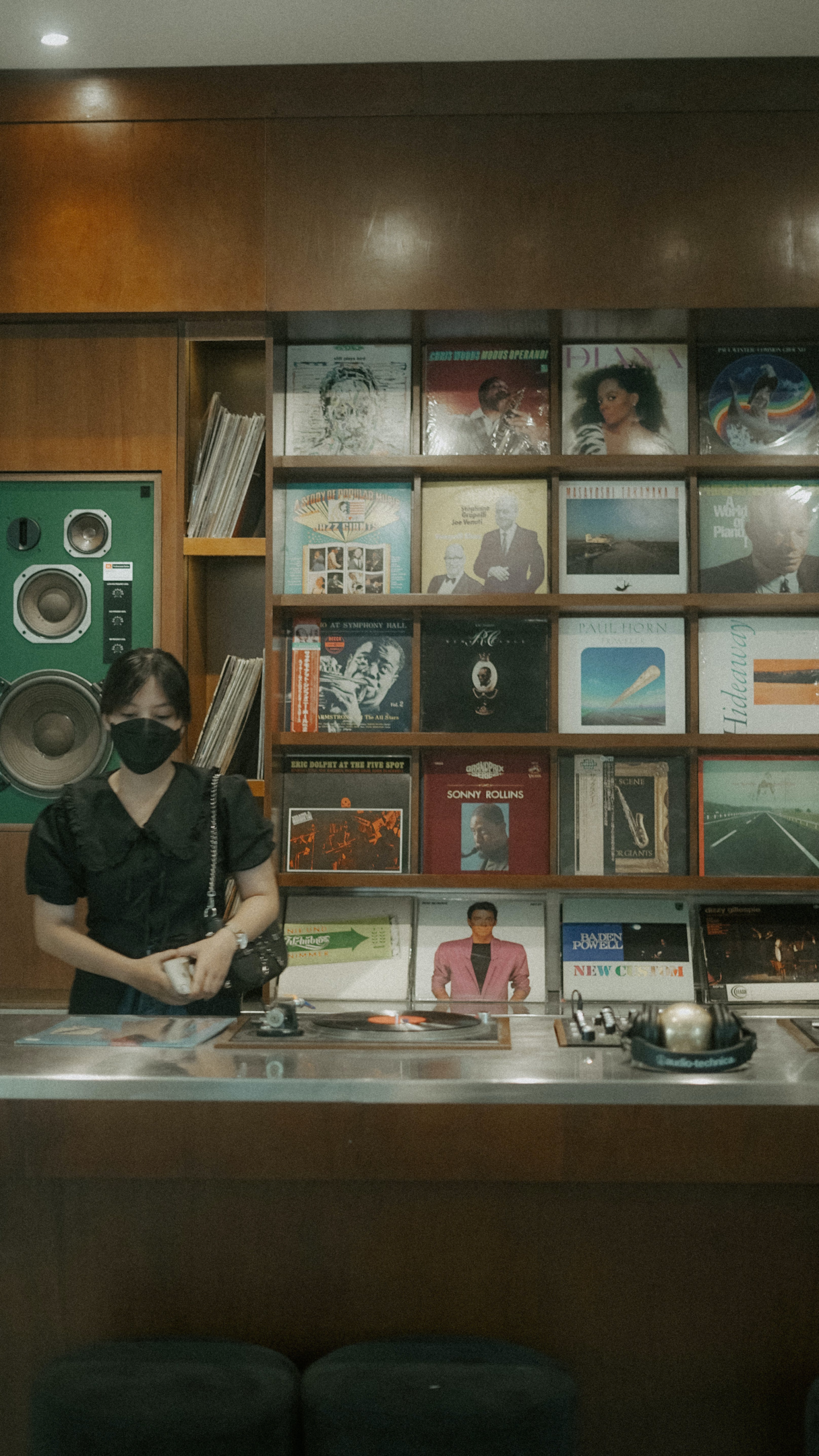
Collectors use a grading system to assess a record's condition, ranging from 'Mint' (perfect condition) to 'Poor' (significantly damaged). A 'Mint' condition record can be worth several times more than the same record in 'Poor' condition.
Artist Fame: Star Power Matters
The popularity and influence of the artist can also greatly impact a record's value. Records by iconic artists such as Elvis Presley, Led Zeppelin, or The Beatles are typically more valuable than those by lesser-known artists. However, there are exceptions. A record by a relatively unknown artist can become valuable if it gains a cult following or if the artist later becomes famous.

For instance, an original pressing of Prince's 'The Black Album' is considered one of the most valuable vinyl records in the world, with copies selling for up to $27,500. This is due to the album's unique history: Prince ordered the destruction of nearly all copies shortly before its release, making it exceedingly rare.
The vinyl record market is a fascinating world where a seemingly ordinary piece of vinyl can be worth a fortune due to factors like rarity, condition, and artist fame. As vinyl records continue to grow in popularity, this vibrant market is likely to become even more intricate and exciting. Whether you're a seasoned collector or a casual music lover, navigating this ecosystem can be a thrilling journey filled with unexpected discoveries.
Where to Buy and Sell Vinyl Records
In today's market, there are numerous avenues for buying and selling vinyl records. Online platforms like eBay and Discogs offer a vast selection and easy accessibility, while brick-and-mortar record stores provide a tangible, nostalgic experience many enthusiasts crave.
Online Platforms: Convenience and Variety at Your Fingertips
The rise of the internet has revolutionized the vinyl record market, making it easier than ever to search online and buy and sell records from the comfort of your own home.
eBay: As one of the world's largest online marketplaces, eBay is a popular choice for buying and selling vinyl records. With its auction-style format, you can potentially snag a great deal or sell a record at a competitive price. The platform's user rating system also provides some level of buyer and seller protection.

Discogs: A platform specifically dedicated to music, Discogs boasts a comprehensive database of artists, albums, and individual record pressings. This makes it an excellent resource for both novice and seasoned record collectors. You can buy directly from other users, and the site's marketplace format allows sellers to set fixed prices for their records.
Brick-and-Mortar Record Stores: A Tangible Experience
Despite the convenience of online shopping, many vinyl enthusiasts prefer the experience of visiting a physical record store. There's something uniquely satisfying about flipping through stacks of records, discovering hidden gems, and chatting with fellow music lovers.
Independent Record Stores: These shops often carry a diverse selection of new and used records. They're typically run by knowledgeable staff who can provide expert advice and recommendations. Many independent stores also host live performances and participate in annual events like Record Store Day, further contributing to the sense of community.
Thrift Stores and Garage Sales: While not specifically focused on vinyl, these places can be gold mines for finding rare and valuable records at bargain prices. It's often hit-or-miss, but the thrill of the hunt is part of the appeal.
Record Fairs: These events gather multiple sellers in one place, offering a wide variety of records to choose from. They're excellent opportunities to find rare items, negotiate prices, and meet other collectors.
Whether you prefer the convenience of online shopping or the tangible experience of a physical store, there's a vinyl buying and selling option to suit your needs. As vinyl records continue to gain popularity, these platforms are likely to evolve and grow, providing even more opportunities for enthusiasts to indulge in their passion for vinyl.
How to Start a Vinyl Record Collection
Embarking on the journey of starting a vinyl record collection is an exciting endeavor. With genres ranging from rock and jazz to soul and blues, there's a vast world of music waiting to be discovered. Whether you're a seasoned audiophile or a novice just dipping your toes into the vinyl scene, building a collection is a rewarding experience that deepens your connection with music.
Identifying Your Musical Interests
The first step in starting a vinyl record collection is determining your musical tastes. Are you a fan of the classic rock sounds of the Beatles and Led Zeppelin? Do you prefer the smooth notes of jazz legends like Louis Armstrong or Miles Davis? Maybe your heart beats to the rhythm of soulful artists like Aretha Franklin or Otis Redding? Or perhaps the raw emotion of blues musicians like B.B. King or Muddy Waters resonates with you?
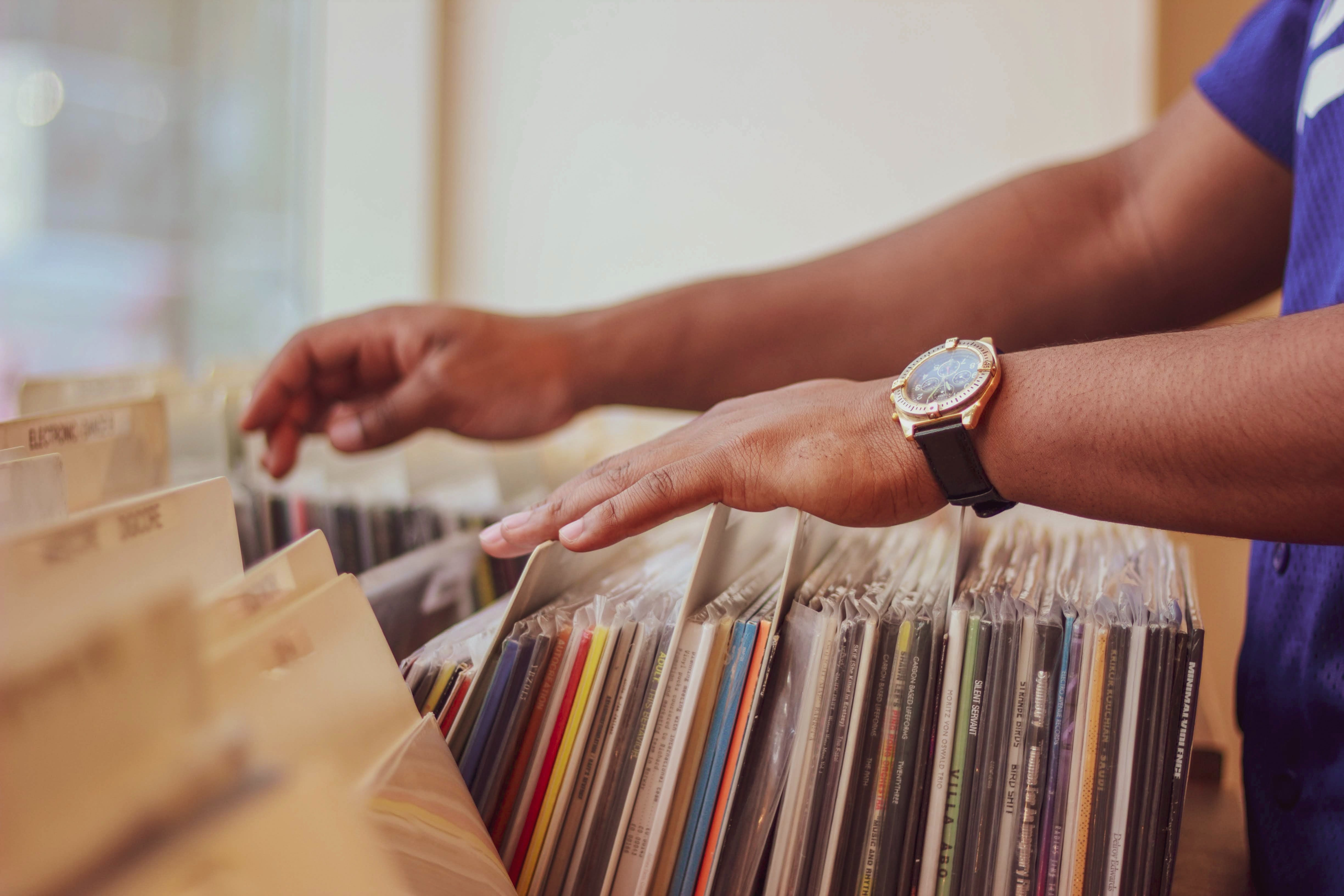
Once you've identified your preferred genres and artists, you can begin to seek out records that align with these interests. Remember, a record collection should be a reflection of your personal taste, rather than what's popular or the most valuable records.
Exploring Different Types of Records
As you delve into the world of vinyl, you'll encounter different types of records. There are 33 1/3 RPM LPs (long play), which are the most common and typically contain a full album of music. Then there are 45 RPM singles, which usually feature one song on each side.
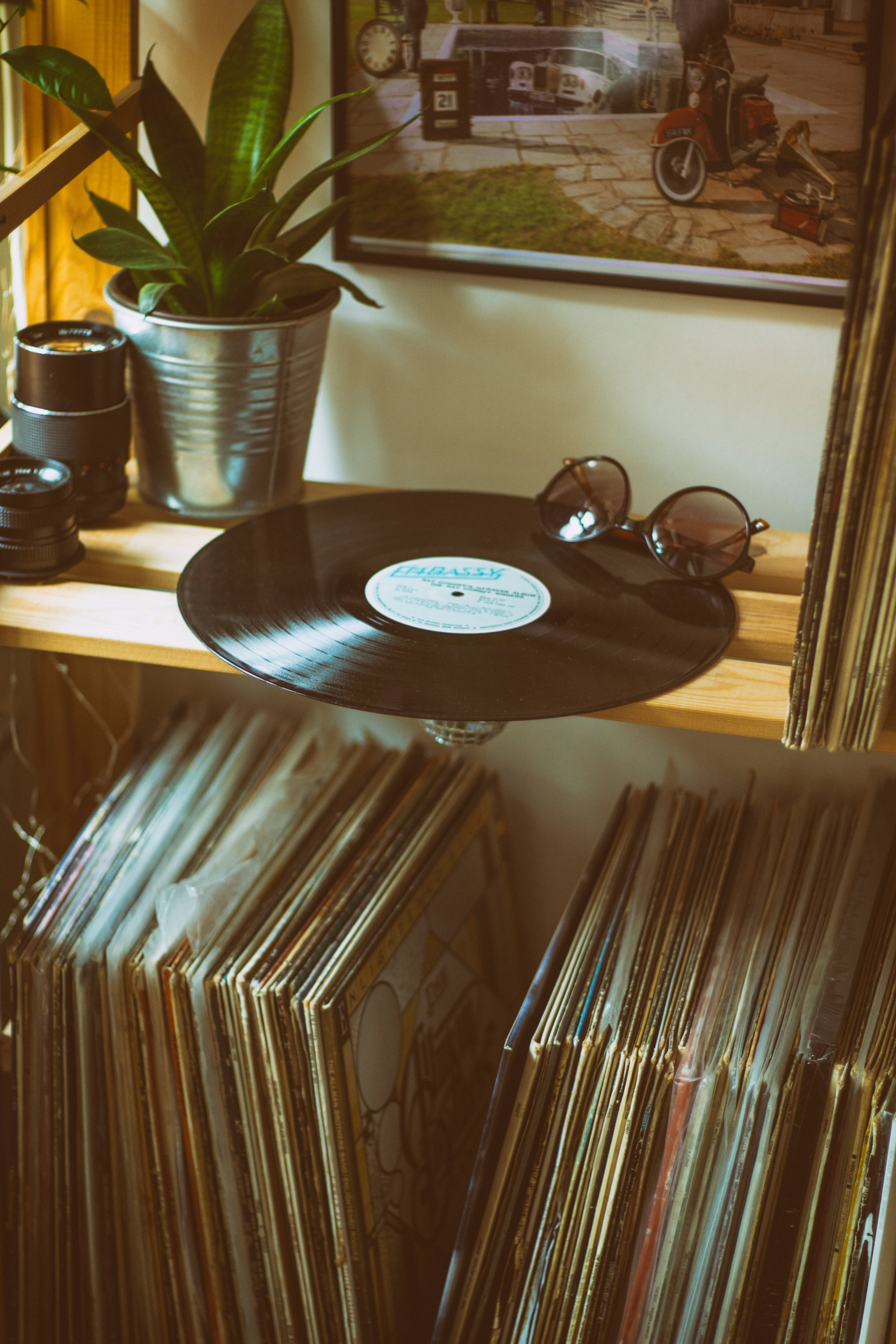
Finally, there are 78 RPM records, which are older and less common but can be a fascinating addition to any collection if you have the right equipment to play them.
Investing in Quality Equipment
A key part of collecting vinyl records is having the right equipment to play them. This includes a turntable, speakers, and possibly an amplifier. Investing in good-quality equipment can significantly enhance your vinyl listening experience.
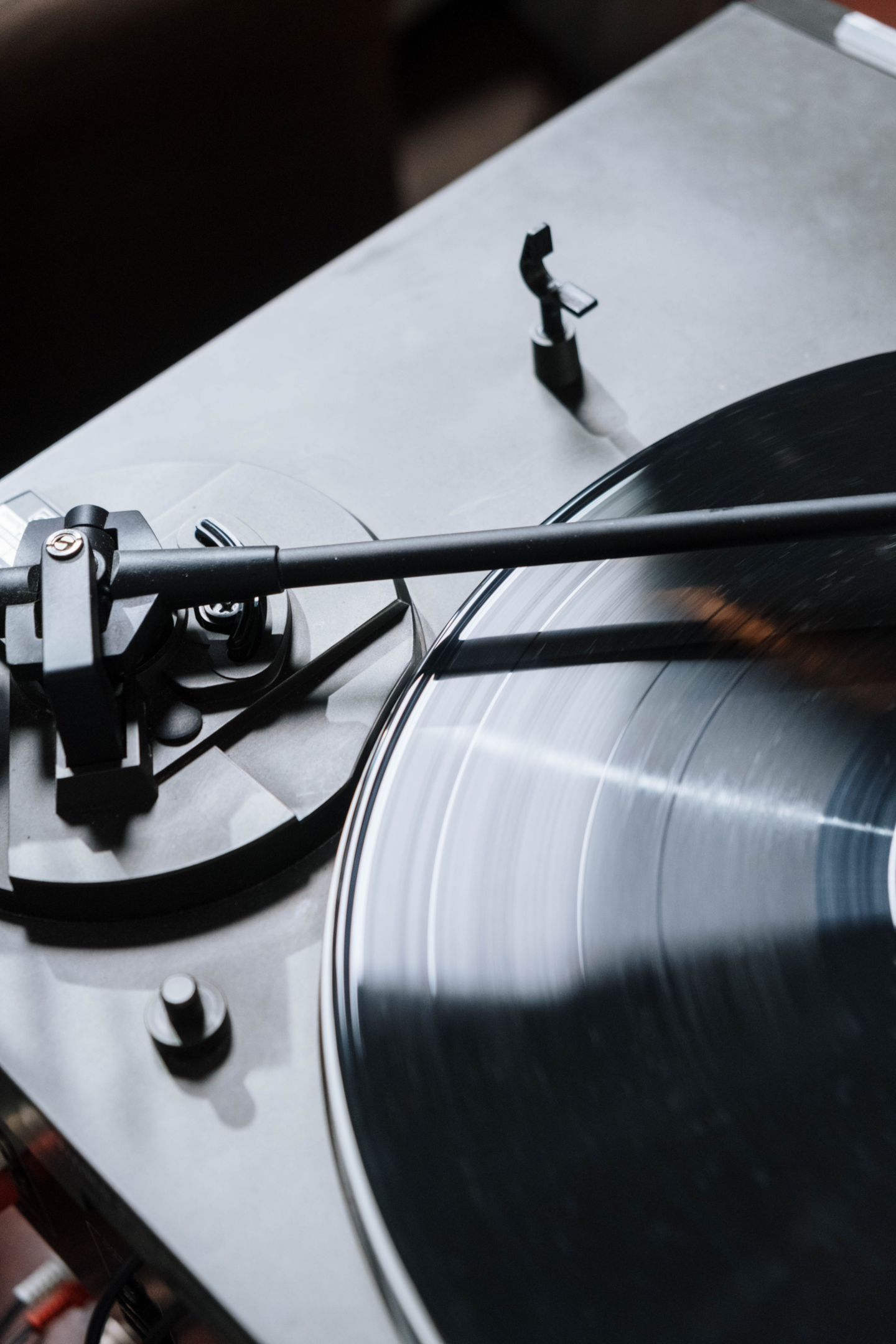
It's also vital to learn how to properly care for your records and equipment to ensure they last.
Also check out: Interested in preserving the quality of your vinyl records? Learn about the remarkable advantages of ultrasonic cleaning in our detailed guide on the Benefits of Using an Ultrasonic Cleaner for Vinyl Records.
Navigating the Vinyl Market
Once you're ready to start building your collection, there are plenty of places to buy and sell your vinyl records. Online platforms like Discogs and eBay offer a vast selection, while local record stores provide the opportunity to physically browse through albums. Record fairs, garage sales, and thrift stores can also yield unexpected treasures.
Starting a vinyl record collection is more than just accumulating albums; it's a journey into the world of music that can enrich your life in countless ways. From discovering new artists and genres to connecting with fellow music lovers, collecting vinyl offers endless possibilities for exploration and enjoyment. So whether you're interested in rock, jazz, soul, or blues, there's a vinyl album out there waiting to be discovered by you.
The Art and Culture of Vinyl Records
The culture surrounding vinyl records is as vibrant as the music they contain. Album artwork, for instance, is a significant aspect of vinyl culture, often serving as a visual companion to the audio experience.
Album Artwork: A Visual Symphony
Album covers are an integral part of the vinyl experience. They often provide a first impression of what's to come from a particular album, setting the tone for the music contained within.
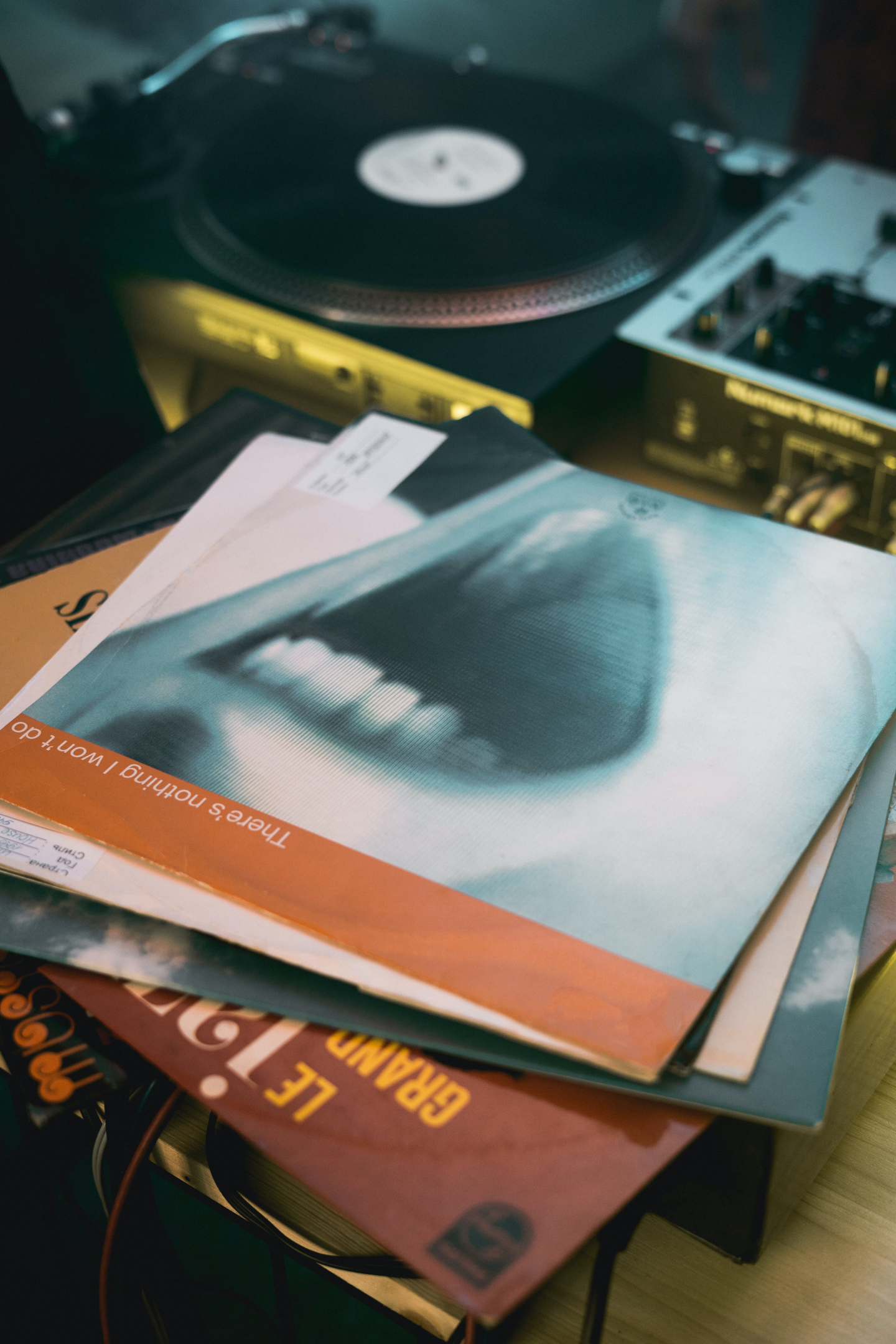
In many cases, album artwork is specifically designed to mirror or complement the music. For example, the iconic cover and title of Pink Floyd's "Dark Side of the Moon" — featuring a prism refracting white light into a rainbow — visually encapsulates the band's experimental, genre-bending sound.
Album covers can also offer insights into the artist's personality, beliefs, and influences. They may be filled with symbolism, hidden messages, or references that fans can spend hours deciphering. This adds an extra layer of depth and complexity to the listening experience, transforming it into a form of active engagement rather than passive consumption.
The Tactile Experience: Holding Music in Your Hands
Another significant aspect of vinyl culture is the tactile experience. In a digital streaming age, where music has taken on a somewhat intangible form, vinyl records offer a tangible connection to the music.
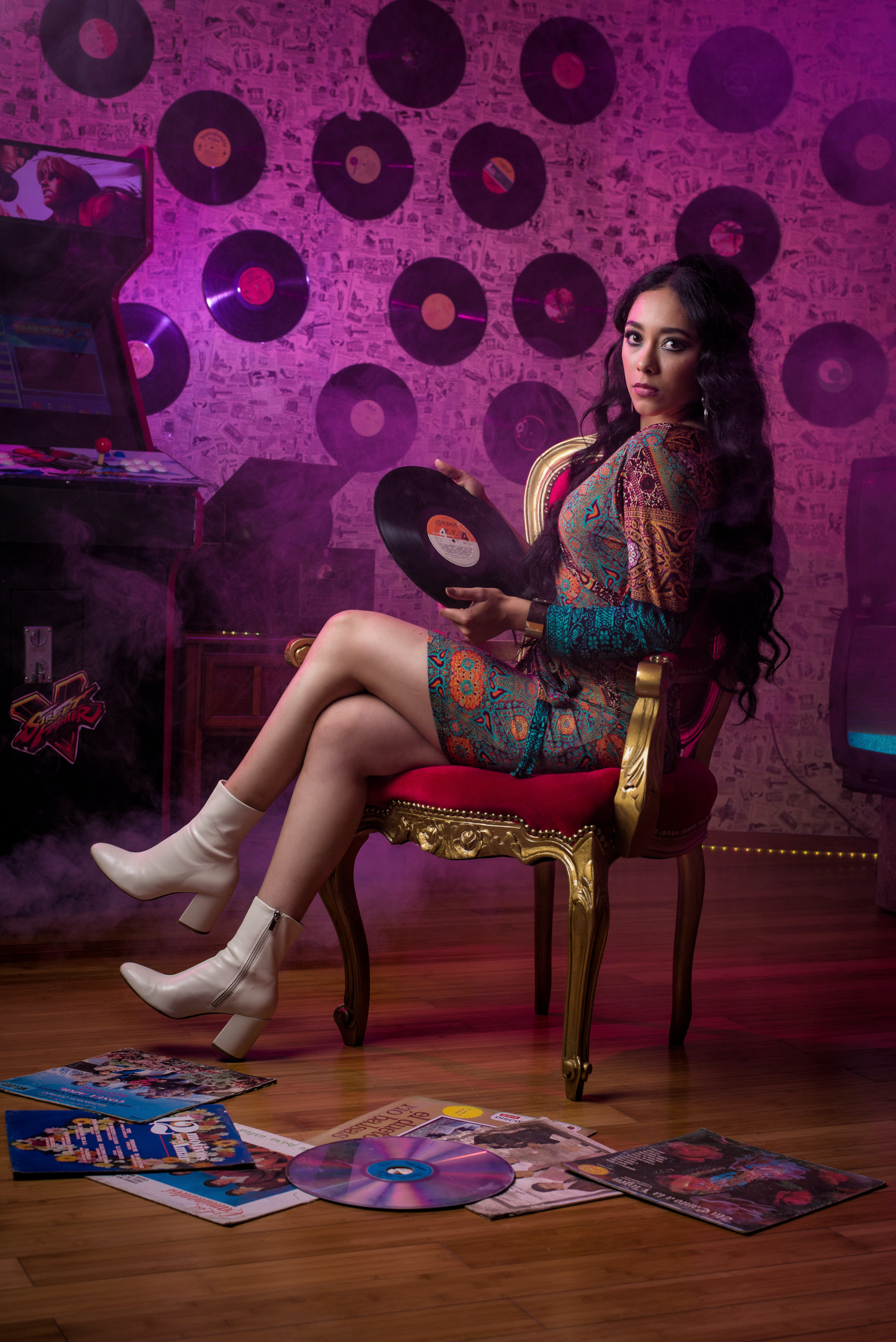
Holding a vinyl record, admiring the artwork, reading the liner notes, and physically placing the needle on the record, all contribute to a ritualistic experience that many vinyl enthusiasts cherish. This tangible interaction with music creates a sense of ownership and personal connection that is difficult to replicate with digital formats.
The Social Aspect: Sharing the Love for Vinyl
Vinyl culture also has a strong social component. Record stores, vinyl clubs, and record fairs provide spaces for vinyl enthusiasts to connect, share recommendations, and bond over their shared passion. The act of digging through crates of records in search of a hidden gem is a communal ritual that brings people together and fosters a sense of community.
The culture surrounding vinyl records is a rich tapestry woven from threads of artistry, physicality, and social connection. Album artwork serves not just as a visual companion to the music, but as a gateway into the artist's world, adding depth and context to the auditory experience. The tactile nature of vinyl records offers a tangible connection to music, while the social aspect of vinyl culture fosters a vibrant community of like-minded enthusiasts. Together, all these elements contribute to making vinyl much more than just a music format — it's a lifestyle.
Vinyl Records: A Sustainable Choice?
In an era of disposable digital media, vinyl records stand out for their longevity. When properly cared for, these records can last for decades, making them a sustainable choice for music consumption.
The Lifespan of Vinyl Records
Vinyl records are renowned for their durability. Unlike digital files that can be lost due to technological failures or obsolete formats, a well-maintained vinyl record can continue to produce high-quality sound for many years.
The lifespan of a vinyl record largely depends on how it's treated. Factors such as storage conditions, handling, and cleaning methods all play a significant role in determining a record's longevity. With the right care — which includes storing records in a cool, dry place, handling them by the edges, and cleaning them regularly — vinyl records can easily last for 50 years or more.
Sustainability and Vinyl Records
In addition to their longevity, vinyl records also offer a more sustainable model of music consumption compared to disposable digital media.
Purchasing a vinyl record can be seen as a long-term investment in music. Instead of streaming songs on platforms that require continuous energy use, vinyl records provide a one-time, physical purchase that can be played again and again, without the need for internet connectivity or electricity (assuming you have a manual turntable).
Moreover, the vinyl culture encourages reuse through the buying and selling of pre-owned records. This not only gives old records a new lease on life but also reduces the demand for new vinyl production, contributing to waste reduction.
The Tangible Connection
Beyond longevity and sustainability, vinyl records offer a tangible connection to music that is absent in digital formats. The act of placing a record on a turntable, lowering the needle, and hearing the slight crackle before the music starts creates a ritual that many listeners find deeply satisfying. Owning a physical record also provides a sense of permanence and ownership that digital files simply can't replicate.
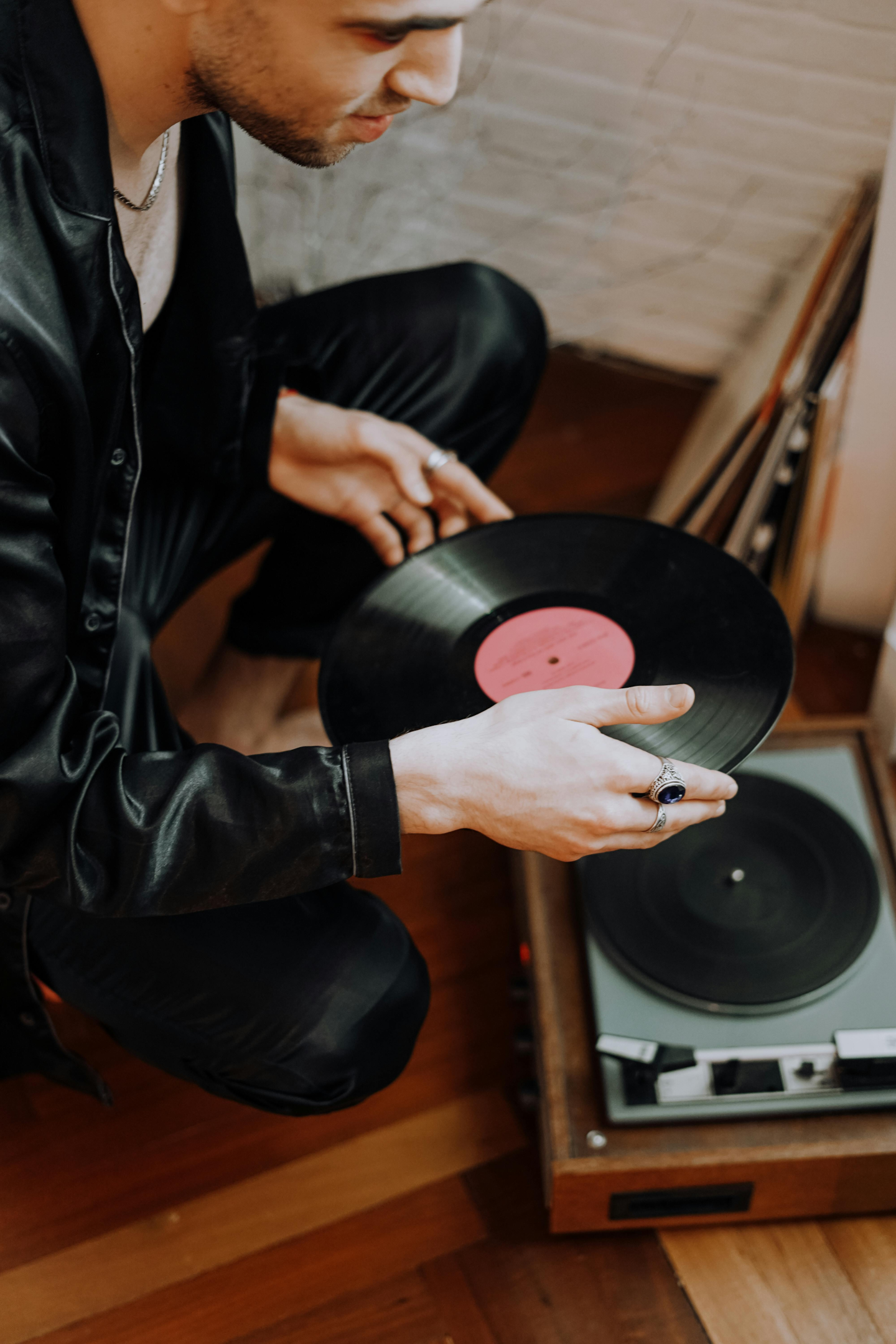
In an age where digital media is often consumed and discarded in the blink of an eye, vinyl records offer a refreshing alternative. Their longevity, combined with their potential for sustainable use and the tangible connection they offer to music, makes them a compelling choice for music lovers seeking a more enduring, meaningful way to enjoy their favorite tunes. As the saying goes, "Vinyl is final," embodying a commitment to lasting musical enjoyment.
The Future of Vinyl Records
Despite the convenience and ubiquity of digital music, vinyl records have proven their staying power. With new artists choosing to release their music on vinyl and record stores continuing to thrive around the globe, the future of vinyl looks promising indeed. This resurgence is not just a fad or a nostalgic trend, but a reflection of the unique qualities that make vinyl a beloved medium for music lovers.
New Artists Embracing Vinyl
One of the most encouraging signs for the future of vinyl is the growing number of new artists releasing their music in this format. Many musicians today recognize the value of vinyl, seeing it as a way to offer fans a more tangible and immersive listening experience.
New releases on vinyl often come with perks like detailed liner notes, song lyrics, and exclusive artwork, making them highly desirable for fans. Furthermore, some artists release special edition vinyl records with unique features like colored vinyl, picture discs, or bonus tracks, adding to their collectability.
The Thriving Record Store Culture
Record stores are also playing a crucial role in keeping the vinyl culture alive. Despite the rise of online shopping, these brick-and-mortar establishments continue to thrive in many parts of the world. They serve not just as retail outlets selling records, but as social hubs where music lovers can gather, discuss their favorite albums, and discover new music.
Many record stores host events such as live performances, album launch parties, and the annual Record Store Day, further cementing their status as vital components of the local music scene. Their enduring popularity attests to the continued demand for vinyl records and the communal experiences they facilitate.
The Appeal of Analog Sound
Another factor contributing to the bright future of vinyl is the enduring appeal of analog sound. Many listeners prefer the warm, rich tones of vinyl, which they find more pleasing and natural compared to the often compressed and sterile sound of digital music files. This preference for analog sound quality is likely to continue driving interest in vinyl records.
Despite living in a predominantly digital age, vinyl records have not only survived but are experiencing a resurgence. With new generations of artists and listeners embracing the unique qualities of vinyl, and with record stores serving as vibrant community hubs, the future of vinyl records looks brighter than ever. Far from being obsolete, vinyl is a testament to the enduring power of physical media and the deep, lasting connections that music can create.
Conclusion
The enduring appeal of vinyl records goes beyond mere nostalgia. Whether it's the unique sound quality, the tactile experience, or the joy of discovering a rare gem at a yard sale or record store, vinyl records offer something truly special. And it seems that more and more people are beginning to realize this. So, whether you're a seasoned collector or a newbie looking to start your collection, there's no better time than now to dive into the world of vinyl records.
